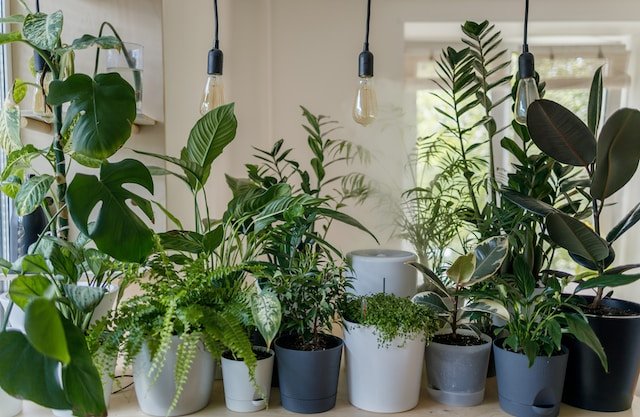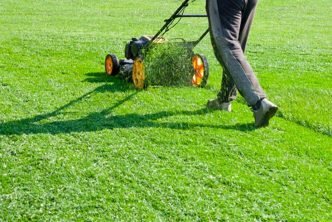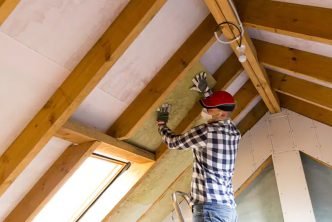Plants breathe life and color into your house, making it feel more like a home. Houseplant ownership isn’t always plain sailing, meaning that things go wrong despite your good intentions. You kill your plants most of the time and don’t even mean to. Whether you’ve been blessed with a green thumb or not, you can take your garden off the ground. Keeping plants alive in an apartment is difficult, but it’s certainly not impossible. Follow these tips if you want to transform your home into a greenhouse.
Table of Contents
Acquire Plants That Do Well Indoors
Some plants thrive outdoors and don’t get what they need indoors, so it’s important to do your homework. Look for low-light-loving plants that don’t need water very often. For example, spider plants don’t require constant attention; their thick, fleshy roots allow them to tolerate inconsistent watering. Spider plants purify the surrounding air, acting as a natural filter to reduce pollutants. You can grow ferns indoors, but make sure to keep them away from radiators and sunny windows. Ferns look best in hanging baskets because their fronds can drape. Keep in mind that most ferns are slow-growing and can take years to reach maturity.
Plants that filter and purify the air are easy to take care of. Different plants thrive in different spots based on the amount of space and light available, so know where the plant should go. One of the biggest mistakes you can make is to try to squeeze the plants between things. Plants require ample room to show off their beauty. Plus, if you place containers between or behind pieces of furniture, it will be difficult for the plants to breathe. With good airflow, your plants can achieve better temperature control and CO2 replenishment. Buy plants that are smaller than the ones you want. Bigger plants are heavier and harder to move around.
Water Sparingly
If you can’t keep plants alive, chances are you’re over- or under-watering them. Instead of watering your plants and seeing how they respond, you should better examine the conditions they’ve been growing in to see if you can identify the problem. Overwatering leads to yellowing leaves, brown tips, and wilting despite wet soil, while underwatering causes dry leaves, brown tips, and leaf curling. Understand what kinds of plants you have, research the water schedule they need, and stick to the rules. Generally speaking, far more plants die from overwatering than underwatering, but they’ll suffer with little water as well.
Read Up on Soil Preferences
Most plants prefer light, moist soil. However, some plants have needs that a standard potting mix can’t meet, such as faster drainage or more aeration. Succulents, for instance, require loose, rocky soil that is nutrient-rich because they’re native to desert conditions. In case you didn’t know, succulents are pretty easy to kill. Soil mixes designed for succulents are easy to find and purchase both locally and online. You can’t use garden soil for indoor plants because it’s too heavy and dense for potted plants. With time, it will suffocate the roots of the plants.
Repot When Necessary
If the plants have the right environment from the very get-go, they’ll reward you with lush, relaxing greenscapes. You should choose containers that are between six and eighteen inches, depending on the size of the plants. As far as size is concerned, it refers to the diameter of the pot or planter; this is important if you order online. Modern decorative planters are available in several materials, including ceramic, recycled materials, and fiberglass. When you purchase a plant, it comes in a tiny nursery pot. You’ll want to find a planter that you can replant your plant in.
The best time to repot plants is in the spring because they have actively growing roots. Repotting doesn’t necessarily mean changing the planter but changing the soil, so you can keep your current container. If your plant has visibly overgrown its planter, there’s nothing you can do. The planter shouldn’t be more than two inches larger in diameter for tabletop plants and no more than four inches larger in diameter for floor plants. Do your best not to disturb the root while repotting because it can die. Plus, damaged roots can weaken the plant, so it begins to show signs of decline.
Clean Dusty Leaves
If the leaves are messy, there’s less opportunity for photosynthesis, so your houseplants will be less efficient, and their health will suffer. Just as you clean different surfaces with a damp cloth to remove dust, you should also wipe the leaves of your plants. Place one hand underneath the leaf and wipe down the top with your other hand, slowly moving away from the stem. Certain factors might cause dust to accumulate, such as leaving the windows open frequently, so you might have to clean the leaves more often. If you have a large potted plant, you can use the shower to clean off the dirt.
Find The Right Light
Finally, yet importantly, find the right light. The human eye automatically compensates for brightness, meaning that we’re not capable of judging light levels appropriately. The good news is that you don’t need expensive tools like spectrometers to determine how much sun there is throughout the day. Pick a spot in your home where you’d like to place a plant. At the brightest time of the day, raise your hand and look at the shadow. If you notice a well-defined shadow and a stark contrast, there’s lots of light everywhere. Conversely, if you see a faint shadow and an unclear outline, the light is low.
Concluding Thoughts
All in all, houseplants are sensitive to environmental changes and require adequate care. It’s not difficult to keep them healthy and thriving. With just minimal care, you can ensure years of enjoyment, not to mention a beautiful home. You should avoid moving your plants too often because they can be sensitive to jarring. If a plant requires light, it’s not a good idea to keep it in too much darkness.





